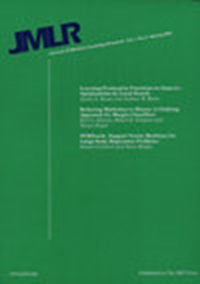Efficient Anti-Symmetrization of a Neural Network Layer by Taming the Sign Problem
IF 5.2
3区 计算机科学
Q1 AUTOMATION & CONTROL SYSTEMS
引用次数: 0
Abstract
Explicit antisymmetrization of a neural network is a potential candidate for a universal function approximator for generic antisymmetric functions, which are ubiquitous in quantum physics. However, this procedure is a priori factorially costly to implement, making it impractical for large numbers of particles. The strategy also suffers from a sign problem. Namely, due to near-exact cancellation of positive and negative contributions, the magnitude of the antisymmetrized function may be significantly smaller than before anti-symmetrization. We show that the anti-symmetric projection of a two-layer neural network can be evaluated efficiently, opening the door to using a generic antisymmetric layer as a building block in anti-symmetric neural network Ansatzes. This approximation is effective when the sign problem is controlled, and we show that this property depends crucially the choice of activation function under standard Xavier/He initialization methods. As a consequence, using a smooth activation function requires re-scaling of the neural network weights compared to standard initializations.基于驯服符号问题的神经网络层的有效抗对称
本文章由计算机程序翻译,如有差异,请以英文原文为准。
求助全文
约1分钟内获得全文
求助全文
来源期刊

Journal of Machine Learning Research
工程技术-计算机:人工智能
CiteScore
18.80
自引率
0.00%
发文量
2
审稿时长
3 months
期刊介绍:
The Journal of Machine Learning Research (JMLR) provides an international forum for the electronic and paper publication of high-quality scholarly articles in all areas of machine learning. All published papers are freely available online.
JMLR has a commitment to rigorous yet rapid reviewing.
JMLR seeks previously unpublished papers on machine learning that contain:
new principled algorithms with sound empirical validation, and with justification of theoretical, psychological, or biological nature;
experimental and/or theoretical studies yielding new insight into the design and behavior of learning in intelligent systems;
accounts of applications of existing techniques that shed light on the strengths and weaknesses of the methods;
formalization of new learning tasks (e.g., in the context of new applications) and of methods for assessing performance on those tasks;
development of new analytical frameworks that advance theoretical studies of practical learning methods;
computational models of data from natural learning systems at the behavioral or neural level; or extremely well-written surveys of existing work.
 求助内容:
求助内容: 应助结果提醒方式:
应助结果提醒方式:


